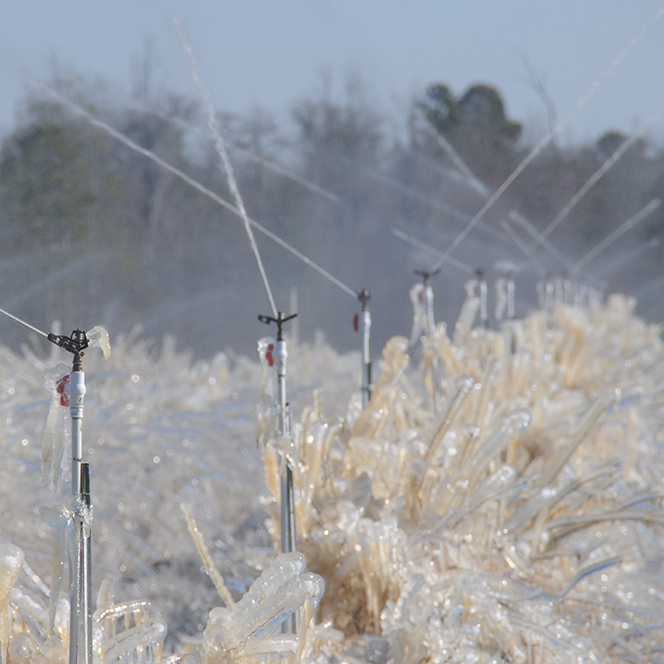Georgia weather is predictably unpredictable, bitter cold one week and balmy the next. University of Georgia Cooperative Extension experts urge Georgia growers to pay close attention to the weather over the coming months and be prepared to use irrigation for frost protection and to overcome potential dry conditions as we move into spring.
Fortunately, there is currently no drought in Georgia due to wet conditions over the winter and there is ample soil moisture in many fields. However, drought can reappear at any time and is more likely when spring comes early, as plants come out of dormancy and begin to use more water.
Drought conditions last summer and autumn affected most of Georgia’s agricultural areas, and some may still be suffering from below normal soil moisture.
“The tricky thing is that droughts tend to deliver a one-two punch for growers, as we first get hit with warm, dry conditions in the fall then, if those conditions continue into winter, there is not enough recharge to improve water reserves in the soil. So, when plants come out of dormancy earlier and start sucking up the groundwater, there isn’t enough to sustain those plants as we move into the warmer months and it becomes a vicious cycle,” said UGA Agricultural Climatologist Pam Knox.
During years where are no El Nino or La Nina weather patterns expected, winter months will often be warmer with fewer chill hours, she said. As spring buds begin to form and flower, late frosts can occur and damage those buds, impacting harvests.
This is particularly important for Georgia’s blueberry growers, who met earlier this month in Alma, Georgia, for the annual UGA Blueberry Update where Knox talked about management strategies to help mitigate the impact of a possible late frost.
Knox reminded the growers of the multiple benefits of using irrigation in blueberry production, first to ensure that enough water is getting to the plants, but also as a potential frost protection strategy if overhead sprinkler systems are used.
“Using overhead irrigation as a frost protection method is definitely a complex process. The idea is that, if temperatures aren’t predicted to be too low, applying water just before temperatures drop can help insulate plants,” Knox said. “However, this needs to be a careful calculation. If temperatures drop too low and ice sits on plants too long it can damage the buds and leaves and we can end up with a lot of breakage”.
UGA Extension Bulletin 1479, “Commercial Freeze Protection for Fruits and Vegetables,” is a great resource to learn more about how to protect crops during cold and variable months. The bulletin explains various factors that need to be considered when using overhead irrigation as a frost protection method and references the different stages of development to consider.
As we move into spring and more weather data are collected, Knox will be posting updates on her blog, “Climate and Agriculture in the Southeast,” to help producers get a clearer sense of what to expect. She also suggests using a combination of weather prediction resources, such as the National Weather Service and the UGA Weather Network. The UGA network collects from stations throughout Georgia. To view this data, go to www.GeorgiaWeather.net.







